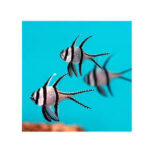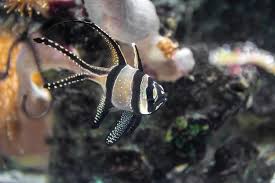In Chinese culture, dragons (龙, lóng) are among the most powerful and revered mythological creatures. Unlike the fire-breathing dragons of Western legends, Chinese dragons are associated with both water and fire, symbolizing a balance of opposing yet complementary forces. These elements are deeply rooted in ancient philosophy, folklore, and religious beliefs, shaping how dragons are perceived in myths, rituals, and imperial traditions.
This article explores the dual nature of Chinese dragons as masters of water and fire, their representation in history, and their significance in shaping Chinese traditions.
I. The Dragon as the Supreme Water Deity
1. Dragons as Rulers of Water and Rain
In Chinese mythology, dragons are most commonly associated with water. They are believed to reside in rivers, lakes, and seas, controlling rainfall, floods, and storms.
- The Four Dragon Kings (四海龙王, Sìhǎi Lóngwáng) – These divine beings govern the four major seas: the East, West, South, and North China Seas. They regulate rain and ensure harmony in nature.
- The Azure Dragon (青龙, Qīnglóng) – A celestial dragon representing spring, fertility, and the renewal of life through water.
- Dragon Gates (龙门, Lóngmén) – A famous legend describes carp transforming into dragons by leaping over waterfalls, symbolizing perseverance and success.
Throughout history, emperors conducted dragon rituals to pray for rain and ensure agricultural prosperity. The belief in dragons as rain-bringers is why Chinese temples often feature dragon motifs in regions dependent on water for farming.
2. Dragons and the Control of Floods
Chinese legends depict dragons as both creators and controllers of floods. Some stories describe them unleashing devastating waters, while others portray them as protectors of human settlements.
- The Great Yu and the Dragons – Yu the Great (大禹, Dà Yǔ), founder of the Xia Dynasty, was said to have been aided by dragons in taming the Great Flood. With their help, he diverted rivers and saved countless villages.
- The Black Dragon of the Yangtze River – In some tales, a mighty black dragon was believed to control the Yangtze River, and local rulers built temples to appease its spirit.
Even today, Chinese hydrological projects and water conservation efforts use dragon symbolism to invoke protection against natural disasters.
3. The Dragon Dance and Rain-Calling Rituals
The Dragon Dance (舞龙, Wǔlóng) is a famous traditional performance during festivals, originally performed to invoke rain and prosperity.
- It is most commonly seen during the Spring Festival and harvest celebrations.
- The movements mimic the flow of rivers and waves, reinforcing the dragon’s connection to water.
- Farmers in ancient China prayed to dragon spirits to bring timely rainfall for crops.
The Dragon Dance is still performed today, preserving the centuries-old link between dragons and water.
II. The Fiery Side of the Dragon: Symbolism and Power
1. The Dragon as a Symbol of Fire and Cosmic Energy
Though primarily associated with water, dragons in Chinese mythology also represent fire, yang energy, and celestial power. Unlike Western dragons that breathe flames destructively, Chinese dragons embody fire as a life-giving force.
- The Red Dragon (赤龙, Chìlóng) is a symbol of summer, fire, and vitality.
- The Emperor’s Dragon Throne was associated with the sun’s divine fire, reinforcing the ruler’s celestial authority.
- The Dragon’s Pearl (龙珠, Lóngzhū) often depicted in art, is believed to contain the dragon’s fiery essence, granting wisdom and strength.
Fire, as an element, represents transformation, destruction, and renewal, making dragons powerful figures in both creation and destruction myths.
2. The Flaming Dragons in Warfare
Throughout history, dragons have also been linked to fire in the context of war. Emperors and generals used dragon imagery to symbolize fiery strength, aggression, and invincibility.
- The Flaming Dragon Army of the Han Dynasty – Han generals used banners with dragon motifs to intimidate enemies on the battlefield.
- The Dragon Cannon (龙炮, Lóngpào) – In ancient China, some cannons were shaped like dragons, symbolizing firepower and divine strength.
- Firecrackers and the Dragon Dance – During battles and festivals, firecrackers were set off in dragon-themed rituals to scare away evil spirits and bad fortune.
In both warfare and spiritual traditions, the dragon’s fiery aspect reinforced its role as a protector and bringer of change.
III. The Yin-Yang Balance: Water and Fire in Dragon Symbolism
1. The Dual Nature of the Dragon in Daoist Philosophy
Chinese philosophy, especially Daoism (道教, Dàojiào), emphasizes the balance between opposing forces, known as yin (阴) and yang (阳).
- Water (阴, yīn) is the passive, nurturing force, associated with adaptability and wisdom.
- Fire (阳, yáng) is the active, aggressive force, associated with passion and transformation.
The Chinese dragon embodies both yin (water) and yang (fire), representing cosmic balance and harmony. A perfect ruler was expected to govern with both the wisdom of water and the strength of fire, just as the dragon embodies both qualities simultaneously.
2. Dragons in Feng Shui: Balancing Water and Fire Energy
In Feng Shui (风水, Fēngshuǐ), dragons are used to balance elemental energies in landscapes and architecture.
- Water Dragon (水龙, Shuǐlóng) – Associated with wealth and prosperity, often placed near rivers, ponds, or aquariums.
- Fire Dragon (火龙, Huǒlóng) – Represents power and protection, often seen in temple carvings and incense burners.
Many imperial palaces and temples were designed to incorporate both water and fire elements in their layout, ensuring harmony and fortune.
IV. The Lasting Legacy of Water and Fire Dragons in Modern China
1. Dragon Boat Festivals: Honoring the Water Dragon
The Dragon Boat Festival (端午节, Duānwǔ Jié) is one of the most famous celebrations, honoring the dragon’s connection to water.
- Races feature long boats decorated as dragons, gliding over rivers in a symbolic tribute.
- The festival celebrates unity, perseverance, and the dragon’s blessing for safe waters.
2. Fire Dragons in Chinese New Year Celebrations
During Chinese New Year, firecrackers, fireworks, and dragon-themed performances symbolize the fiery spirit of dragons.
- The Fire Dragon Dance (火龙舞, Huǒlóng Wǔ) is performed in southern China, featuring dragons made of burning incense sticks.
- Firecrackers are set off to ward off evil spirits, reinforcing the protective role of the dragon’s fire.
These modern traditions continue the ancient belief in dragons as both fire and water spirits, ensuring luck, prosperity, and balance.
Conclusion: The Eternal Guardian of Balance
The Chinese dragon remains one of the most complex and revered symbols in Chinese mythology, philosophy, and culture. As rulers of both water and fire, dragons embody opposing forces that coexist in harmony, representing:
- Life-giving rain and destructive floods.
- Fiery passion and celestial wisdom.
- Imperial authority and natural balance.
From ancient myths to modern celebrations, dragons continue to inspire and protect the people of China, symbolizing the perfect union of power, wisdom, and balance in the universe.










